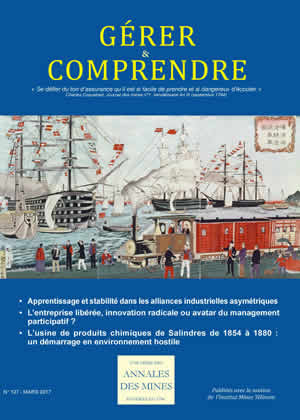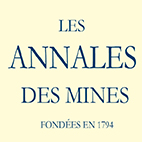| |

|
|
 N° 127 - Mars 2017 N° 127 - Mars 2017
L’entreprise libérée, innovation radicale ou simple avatar du management participatif ?
Par Patrick GILBERT
Professeur des universités à l’IAE Paris I Panthéon-Sorbonne (Sorbonne Business School)
Ann-Charlotte TEGLBORG
Enseignant-chercheur à Novancia Business School Paris, chercheur affilié au Gregor, IAE Paris I Panthéon-Sorbonne (Sorbonne Business School) et chercheur invité à University College of London-IOE
et
Nathalie RAULET-CROSET
Maître de conférences à l’IAE Paris I Panthéon-Sorbonne (Sorbonne Business School) et chercheure à I3-CRG École polytechnique
L’engouement pour le phénomène de l’ « entreprise libérée » pose la question de sa réelle nouveauté par rapport à d’autres modèles managériaux qui l’ont précédé. S’agit-il d’une réelle innovation ou bien a-t-on affaire à un nouvel avatar du management participatif ? En quoi l’entreprise libérée s’affranchit-elle des difficultés rencontrées dans la mise en œuvre de celui-ci ? Pour répondre à ces questions, nous nous sommes appuyés ici sur l’étude de trois cas emblématiques : le fondeur Favi, le biscuitier Poult et le dépanneur de flexibles hydrauliques CHRONO Flex. Il en ressort que l’entreprise libérée est à la fois dans la continuité du modèle participatif et en rupture avec celui-ci, et que, si elle parvient à en surmonter certains écueils, les difficultés liées à sa mise en œuvre n’en sont pas pour autant négligeables.
 Télécharger gratuitement l'article Télécharger gratuitement l'article
 Retour au sommaire Retour au sommaire
 N° 127 - March 2017 N° 127 - March 2017
The liberated firm, a radical innovation or simply an avatar of participatory management?
Patrick Gilbert,
professor, IAE Paris I Panthéon-Sorbonne (Sorbonne Business School);
Ann-Charlotte Teglborg,
research professor, Novancia Business School Paris, researcher affiliated with Gregor, IAE Paris I Panthéon-Sorbonne (Sorbonne Business School) & visiting researcher at the University College of London-IOE;
and
Nathalie Raulet-Croset,
senior lecturer, IAE Paris I Panthéon-Sorbonne (Sorbonne Business School) and researcher, I3-CRG École Polytechnique.
Is the “liberated firm” fad all that new in relation to previous managerial models? Is it a genuine innovation or a new avatar of participatory management? How is the liberated firm freed from the difficulties encountered while implementing this form of participatory management? To answer these questions, three emblematic cases are brought into focus: Favi, a metalworking firm; Poult, which makes cookies; and CHRONO Flex, a company that repairs hoses. Liberated firms turn out to be both in continuity and in rupture with the participatory model. Although they manage to overcome some problems, the difficulties of implementing “liberation” are not to be overlooked.
 Download full article Download full article
 Retour au sommaire Retour au sommaire
 N° 127 - Marzo 2017 N° 127 - Marzo 2017
La empresa liberada, ¿innovación radical o simple avatar de la gestión participativa?
Patrick Gilbert,
profesor de las universidades IAE París I Panthéon-Sorbonne (Sorbonne Business School),
Ann-Charlotte Teglborg,
Profesora-investigadora Novancia Business School París, investigadora afiliada al Gregor, IAE París I Panthéon-Sorbonne (Sorbonne Business School) y profesora invitada del University College of London-IOE,
y
Nathalie Raulet-Croset,
Profesora adjunta de la IAE París I Panthéon-Sorbonne (Sorbonne Business School) e investigadora en el I3-CRG École Polytechnique
El entusiasmo que ha despertado el fenómeno de la «empresa liberada» plantea la cuestión de la verdadera novedad respecto a otros modelos administrativos que le precedían. ¿Se trata de una verdadera innovación o de un simple avatar de la gestión participativa? ¿Cómo enfrenta la empresa liberada las dificultades encontradas en la aplicación de la gestión participativa? Para responder a estas preguntas, nos hemos basado en el estudio de tres casos emblemáticos: la empresa de fundición Favi, el fabricante de galletas Poult y el reparador de mangueras hidráulicas CHRONO Flex. Se evidencia que la empresa liberada es a la vez una continuidad y una ruptura del modelo participativo y que, si bien consigue superar algunos de sus problemas, las dificultades en su aplicación pueden ser considerables.
 Retour au sommaire Retour au sommaire
|
|




